The questions included:
- Is medium really the sweet spot between oak and toast characters?
- When purchasing barrels, what should winemakers focus on?
- What is the biggest trend regarding oak barrels?
- What difference does it make if the oak is aged for 10, 24 or 36 months?
- Andrei Prida, Seguin Moreau’s R&D manager;
- Cyril Caplet, award-winning cooper at Billon Cooperage;
- Emilie Faugère, Tonnellerie Vicard’s marketing and communication manager;
- Thomas Teibert, the German-born winemaker who works with Stockinger.
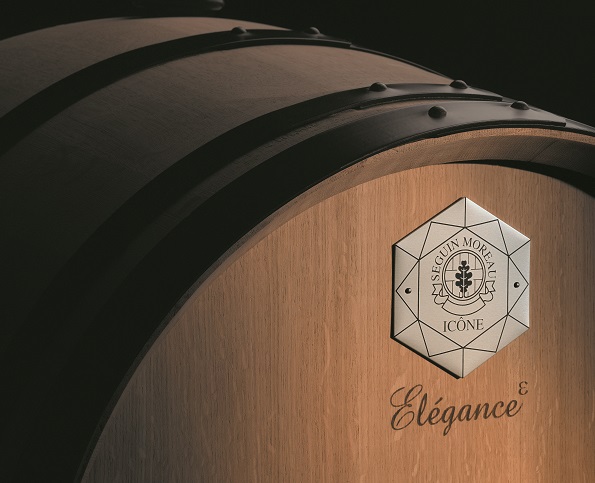
What is the biggest trend regarding oak barrels?
Andrei Prida: “We observe that winemakers are looking more and more for freshness and fruit intensity for barrel-aged wines. The barrel should not provide too much oak or toasting flavours. It must give texture, sweetness, freshness and support the natural fruit of the wine. In terms of production, the cooper is looking to make more consistent barrels. Indeed, the oak is a natural material and it is characterised by high variability of its chemical composition. The selection of oak wood according to chemical analysis is a strong trend to make barrels consistent and provide desired results on wines. Seguin Moreau is a precursor of such approach with the barrel range called Icône (above), with analysis of every log of oak tree and their classification according to impact on the wine, and more recently with QTT range, where barrels are selected on the basis of a new class of natural oak sweet compounds, called QTT.” Emilie Faugère: “It depends on the market. In terms of tasting profiles, they usually want a barrel that is an intermediate profile, combining structure and tension while respecting the fruit. Customers prefer today more subtle, less dominant oak notes than in the 90s-2000s with the mocha trend. In terms of oak origins, customers are still attached to French oak. They also look for a better precision in oak barrels. Our Vicard Generation 7 utilises NIRS (Near-Infrared Spectroscopy) technology to select staves based on their tannin potential. This perfectly uniform raw material selection, along with molecular toasting, has enabled Vicard Generation 7 to offer very precise, uniform and reproducible products.There is also prominent eco and biodynamic trend. Tonnellerie Vicard has developed a range of environmentally friendly barrels, produced using oak parts previously unused in cooperage. Customers are more and more sensitive to the cause and are careful of the impact they are leaving on the environment. The sales of these products are increasing each year.”
Do aspects such as length and conditions of ageing or level of toast trump the influence of oak origin?
Andrei Prida: “Seasoning and toasting conditions can impact the characteristics of barrels. But the barrel will still keep the original properties, more or less modified by these techniques. We observe that very high and deep toasting levels neutralise the wood quality; after such toasting, the barrel provides strong toasty/smoky flavours independently from their original composition. But such barrels are less and less requested by winemakers.”What difference does it make if the oak is aged for 10, 24, 36… months?
Andrei Prida: “There are many physical, chemical and microbiological processes taking place during seasoning: leaching of wood extractives with rain, oxidation, polymerization, conversion from precursors, biochemical degradation and generation of different compounds. It has been shown that oak wood must be seasoned otherwise it brings aggressive and green wood flavours and tannins to wine. Then the wood reaches its optimal quality. After that, there is no reason to season wood longer, even sometimes very old wood can develop musty/earthy flavours. Our experiments showed us that the optimal seasoning time is about 24 months for French oak, we didn’t find significant difference between 24 and 36 months’ seasoning. The seasoning for American oak could be shorter – 12-16 months since it contains less extractives.”Emilie Faugère: “The longer the ageing time, the more the astringent tannins are leached. That is why the Vicard Group guarantees 30 months of natural seasoning on average. We also offer for our premium barrels ageing times up to 48-60 months.”
What about where and how the staves are aged?
Andrei Prida: “The climate and location can impact seasoning. But the mechanisms of this impact are not clearly understood. We think that seasoning is part of the ‘typicité’ of cooperage style.”Cyril Caplet: “We have an outdoor park for the maturation of staves where they will stay between 2 and 3 years. They are stacked in a clear way and on one level only so that the water and the sun have an identical action between the staves above and those below. Rainwater will naturally ‘wash’ the wood to remove the harshest tannins. Alternatively, the sun will dry the staves. Thus, water and rain will naturally dry the woods. The more these are dried, the less the tannic marker is present.”
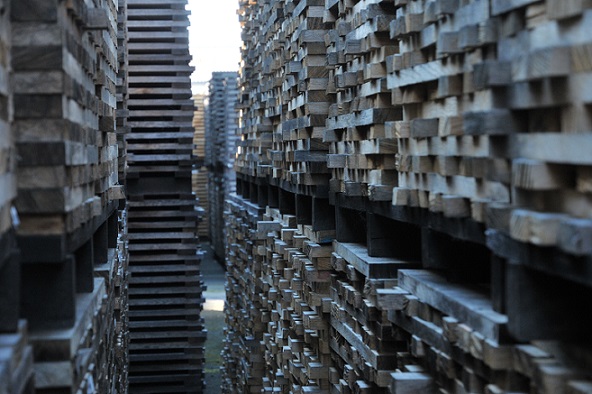
Emilie Faugère: “The Vicard Group devotes an 8ha (20 acres) wood yard (above) for maturation of staves and is committed to an average 30-month natural, air-drying period.”
Regarding toasting and all the variables (eg. the amount of water added during toasting, the temperature and duration) how can a winemaker select the ideal combination for his/her wines?
Andrei Prida: “There is no ideal combination, since different wines interact differently with toasting flavours. Besides, different winemakers are looking for different targets. The best way to find the optimal toasting level for a winemaker is to try different toasting regimes with his own wine and through such experimentation find the best combination. These trials should be updated regularly, since wine styles change over time and targets also. That is also the reason why our cooperage (below) offers 11 different types of toasting, allowing the customer to find the best solution for his objectives.”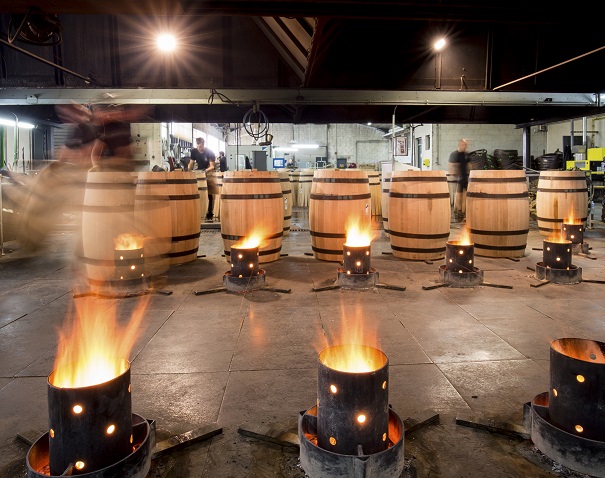
Thomas Teibert: “It’s all about experience with the coopers and your relationship with a cooper or a competent salesperson. But it starts with a clear idea of the winemaker, what his wine should look like in the end. Use of water, duration and temperature of toast are more internal methods of a cooperage to achieve certain results than an important matter of discussion between cooper and winemaker. I do not say this in terms of a secret of a cooper, but in the end it is already complex and the important thing is the combination of everything in a barrel and the final result with a specific wine.”
Emilie Faugère: “The ideal combination will be to select a toasting profile adapted to his/her wine, needs and to the barrel that will be chosen. The Vicard patented toasting system is quite unique in our profession. This revolutionary advancement, designed to provide homogeneity, reproducibility, and precision, uses radiant heat and is fully computerised. Each toasting chamber is a separate closed unit controlled by computer within +/- 3°C. In addition to its precision and total reproducibility, this technology made it possible to develop innovative toasting profiles including gradual toasting in which the temperature is gradually increased in four stages. This unique profile modulates the temperatures that affect the formation, development, and degradation of various aromatic compounds in the oak.”
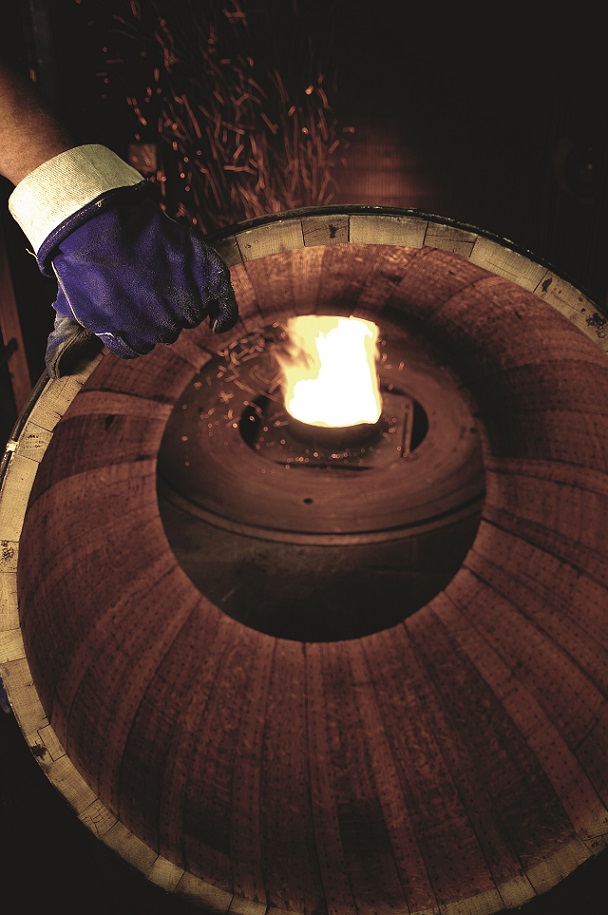
Should there be a standard for, say, light, medium and heavy toast to help guide winemakers?
Andrei Prida: “The notion of light, medium, heavy toasting changes from one cooper to another. So, again, the best way is to trial and find a combination of cooper/type of wood/toasting.”Thomas Teibert: “Not in my opinion: Light at one cooperage is more similar to medium of another. For me there are no standards in the industry. It is about experience, having a clear idea of the wines and confidence in the contact with the cooper.”
Emilie Faugère: “Coopers have always tried to simplify the barrel offer, but it is more complicated than it seems… A toasting standard does not consider the environment, the percentage of new wood in the cellar, the ageing time, but also the barrels of other coopers. A medium profile at Vicard will never be the same as a medium from another cooperage. Also, studies have shown that there is between 15-40% variations in major oak aromas within the same batch of 10 barrels made with the same grain and traditional toasting protocol. As well, a same end toasting temperature does not guarantee the same chemical composition. With traditional toasting, a single barrel can yield chemical levels which are more than 50% different from the other barrels affecting the overall blend!”
Cyril Caplet: “There is no common standard between cooperages for toasting. Even if all have sometimes common or similar names, each cooperage has its own little personal touch to make the toast its own signature. The toasts can be full, medium, strong, long, light etc.”
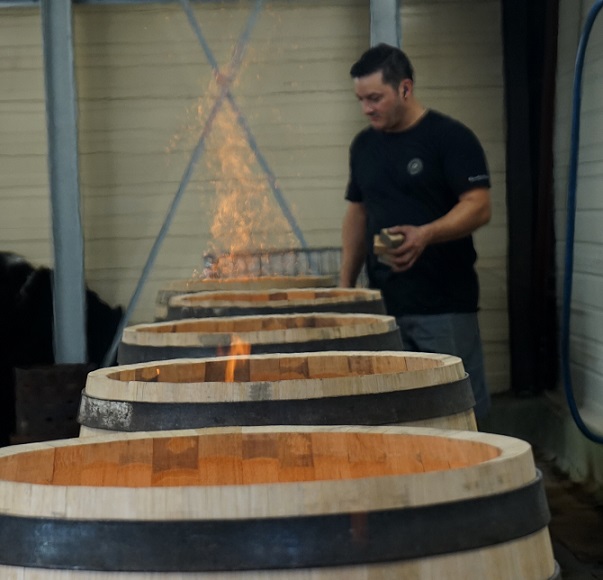
Is medium really the sweet spot between oak and toast characters?
Andrei Prida: “Since medium is different between coopers it is not really true all the time.”Emilie Faugère: “If you do not want to take any risk and have the best of both worlds, medium will be a safe bet. But like I explained before, even by choosing a medium profile you can have toasting variations in the same batch. There is so much different toasting and grain/tannin potential associations that can lead to a superb result. To achieve it, you need to refer to your advisor that will create the perfect customised solution, adapted to your wine. At Vicard, the different toasting profiles were developed with the goal of mastering the expectations of our clients regarding precision and is based on the equation of “selection of raw material · toast · wine · ageing period”.
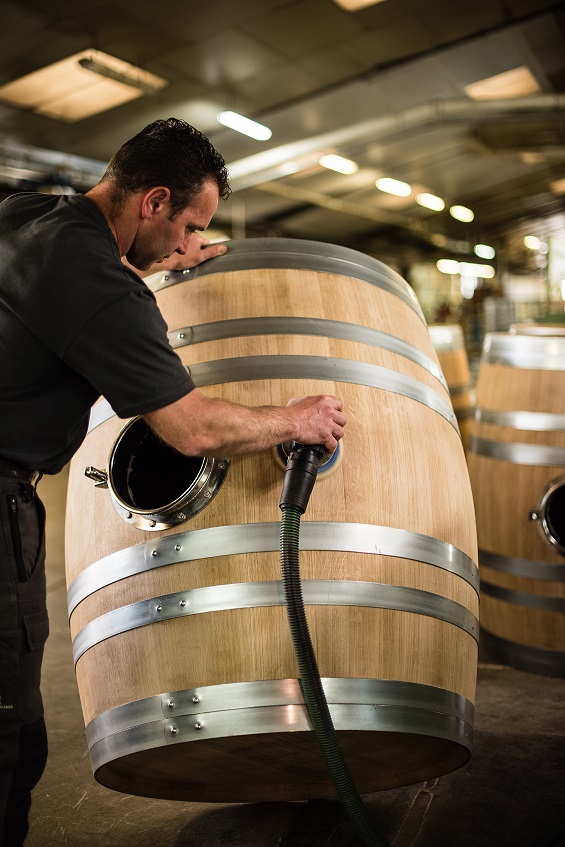
What trends have you noticed regarding size and shape of barrels?
Andrei Prida: “The choice of size and shape of barrels is mostly driven by tradition. The 225L Bordeaux-style barrel is very popular and a common size in many wineries. This size was introduced almost everywhere during the 2000s. We can see now at some wineries the trend to use bigger containers than Bordeaux shape: 300L, 500L, 600L and even bigger. The idea is to protect the wine from excessive oak wood extraction and keep freshness. This trend is more emphasised for wines already qualified as heavy (overripe and high alcohol wines). Nevertheless, the 225L (Bordeaux style) and 228L (Burgundy) are still very common products. These ‘small’ barrels also allow winemakers to have specific cuvee, which corresponds to precise parcels of vineyards.”Cyril Caplet: “The standard barrel remains the 228L here in Burgundy (or 225L in Bordeaux). The thickness of the staves is 25mm. Larger barrels (300 to 820L) represent around 13% of production but this percentage increases significantly each year. The woody impact is less present on a large barrel than on a 228L and it is increasingly popular.”
Emilie Faugère: “Traditional 225L Bordeaux and 228L Burgundy barrels aside, egg-shaped barrels are definitely a thing. Large containers are trendy as well. Winemakers need to optimise their space and want to have a good-looking cellar. These prestigious masterpieces capture the visitor’s attention. Also, they align with the actual trend of having a less marked wine, more respectful of the fruit. By being larger, the surface contact between the oak and the wine will be less important, leaving the wine with more subtle, less imposing oak notes.”
Photo above courtesy of Vicard. Photo below courtesy of Seguin Moreau.
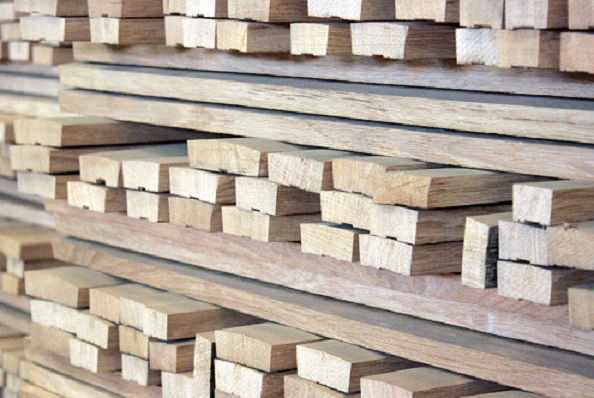
What about the thickness of staves?
Andrei Prida: “There is a common belief that the thickness of staves can affect oxygen transfer rate, eg. a thinner stave (21mm) barrel provides more oxygen to wine than 27mm barrel. However, there is no scientific evidence to prove it. Indeed, there are many other factors besides stave thickness that affect oxygen ingress: wood density, moisture content, occurrence of oxygen in barrel headspace… The technological operations like opening, ullage, racking, and sulphuring play a role in the oxidation status of wine. Finally, the intrinsic wine quality is very important and can buffer different doses of oxygen without any significant sensory changes. All that makes us think that stave thickness is a minor factor in the oxygen impact of barrel.”When purchasing barrels, what should winemakers focus on?
Thomas Teibert: “The same like choosing a good wine. Is the appellation and the vintage the most important? Not in my experience. It is the winery and its know-how and then it comes to other details... In barrels, it is the cooper and seeing with the cooper what he can recommend to achieve the precise result requested.”Emilie Faugère: “Our methodology at Vicard remains on mastering the equation “selection of raw material · toast · wine · ageing period”. That is what the winemaker should focus on when he chooses barrels.”
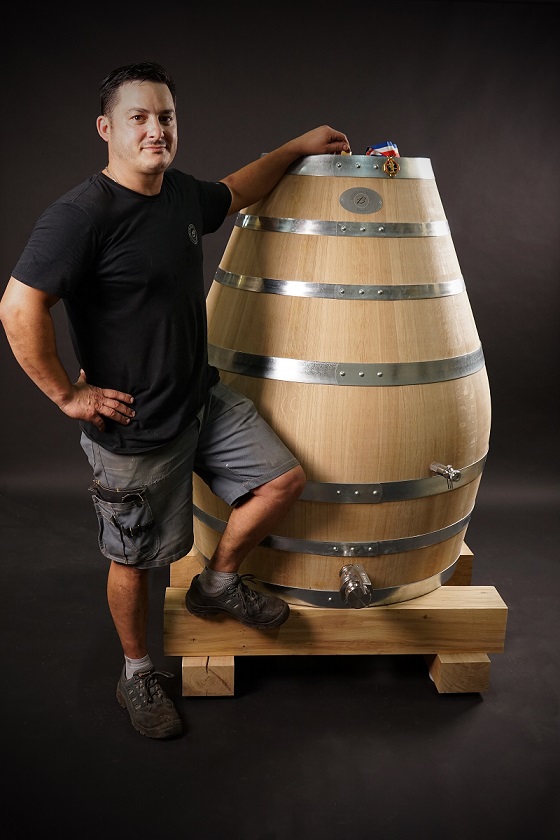
Cyril Caplet (above): “The customer who buys barrels often asks us to provide them with the product that will best suit what they want to do with it. To do this, he must tell us which grape variety he uses, the ageing time, etc. Each winemaker has his own reasons for asking for a certain origin and a certain degree of toasting, the goal is to find the best cask that will enhance the value of his wine even more (without denaturing it by too much heating or poorly adapted wood). Great trust must be established between the cooper and the winegrower. In fact, each year in the spring, the cooper tastes the wines in the cellar with his client to check whether the product is suitable.”
Andrei Prida: “Winemakers should imagine the sensory target of the wine aged in barrel and decide what exactly he expects from a barrel (bringing flavours, sweetness, structure, freshness, spice, etc). Then, with the cooper, he can choose one or several models of barrels which fit this target and adapt the ageing process (duration, condition, racking, etc). This is the way we usually work with our customers.”
For views on oak from winemakers, click here.


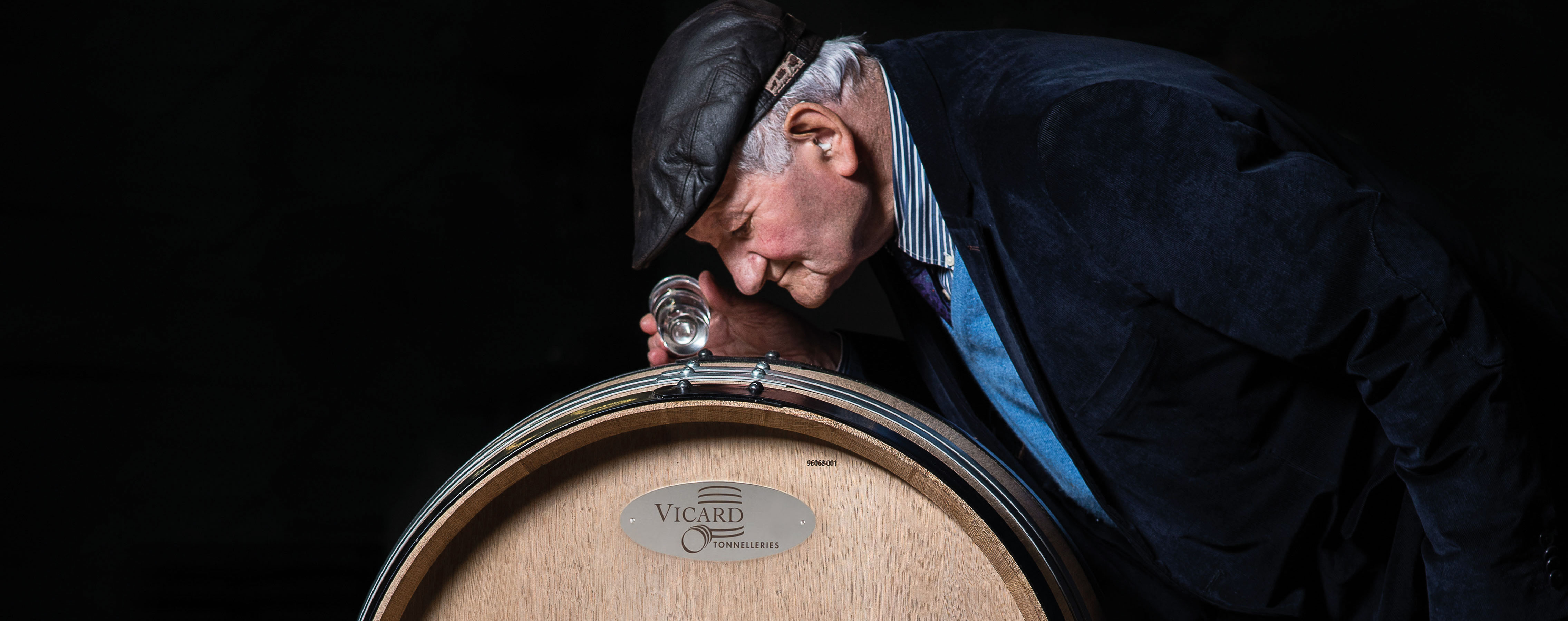










.png)






